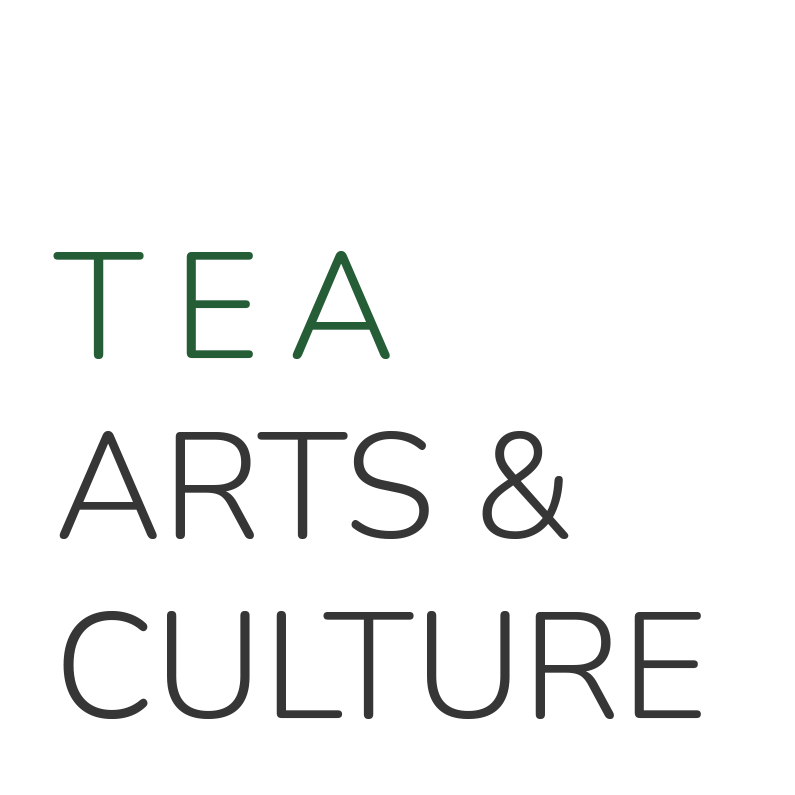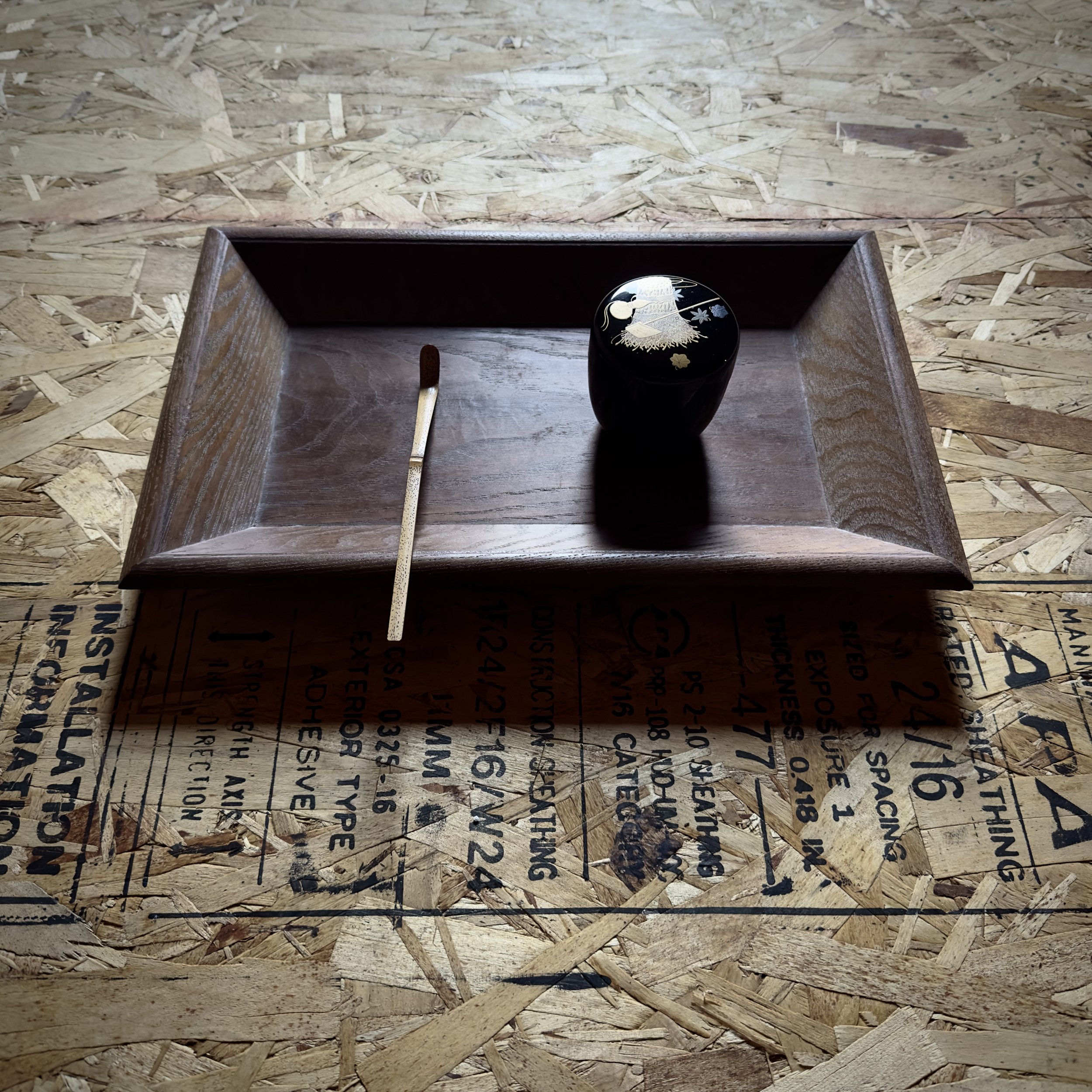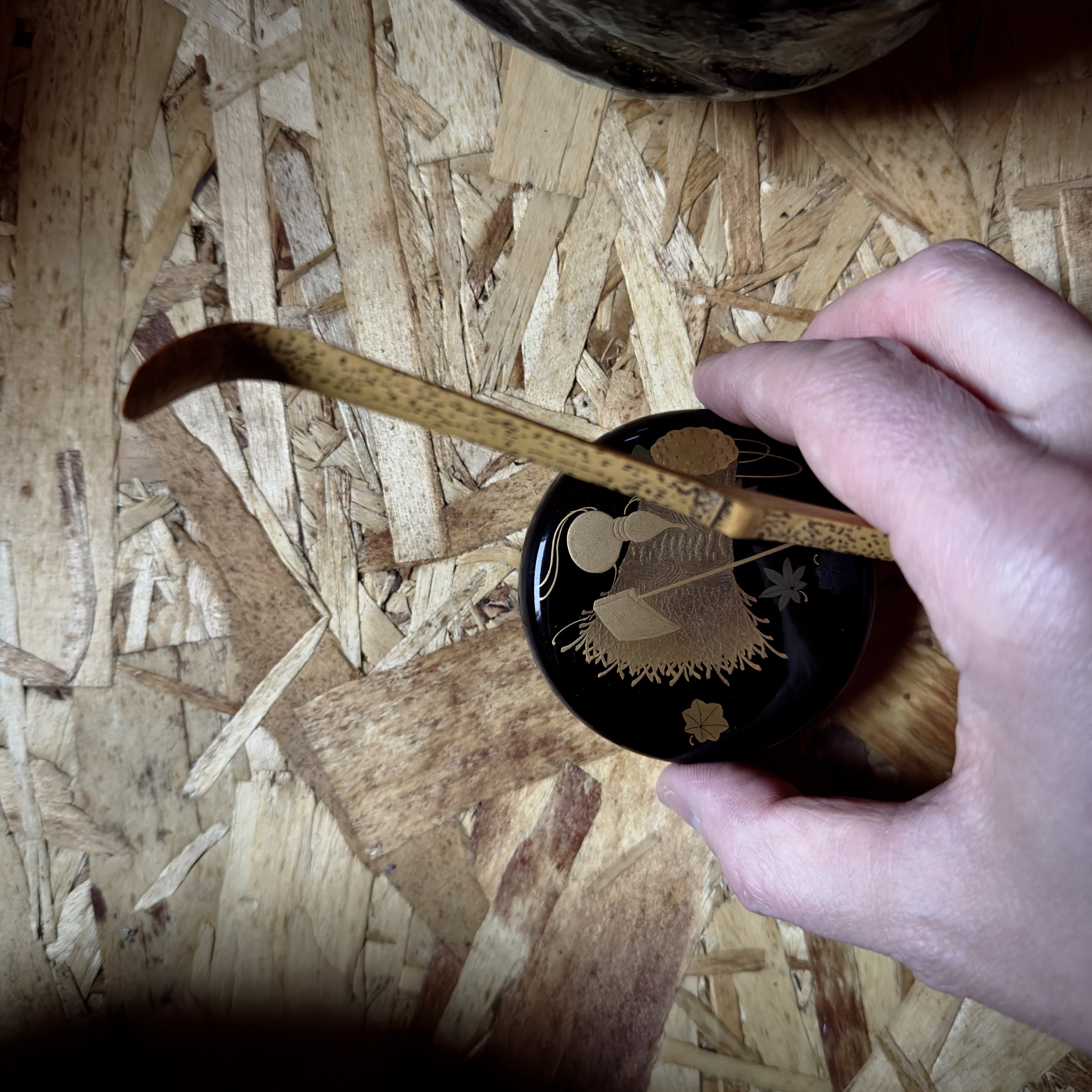In Observance of Decay
By Scott Norton
Scott Norton is a practitioner and educator in tea and tea culture. He has been practicing 茶の湯 chanoyu, 工夫茶 gōngfū chá, and the Korean Way of Tea for two decades, and is a researcher and writer on tea history. Scott has been featured as a lecturer in universities, museums, and tea events. He has collaborated with artists and institutions to develop exhibitions and artworks focusing on tea history and tea practice. Currently, Scott is actively writing for his ongoing tea and meditation blog, Scotttea, practicing and offering tea in and around the Hudson Valley, and researching and recreating Song period style 抹茶 mǒchá. He continues to source tea and teaware from producers in East Asia, as well as research and collect antique teaware, items for incense appreciation, and scholars’ objects from Classical Korea, Japan, and China.
Photo @ Scott Norton
The march from Autumn to Winter can feel endless, but, assuredly, it begins as the first leaf changes color, and the first sign of decay becomes unavoidable. In the world of tea, one can’t help but to anticipate its arrival, for once decay is here, we cannot help but to welcome its presence into the tearoom.
The observance of decay is core to the practice of tea. Indeed, it is the celebrated quality that defines 侘び寂び wabi-sabi, and that guides the aesthetic of 茶の湯 chanoyu towards the austere and rustic, the simple and imperfect, the modest and asymmetrical.
In my tea space, now weathered by the years, decay seems to become more apparent each time I open its door. I can tell how often I have enjoyed its company by the steady growth of cobwebs that have been forming against its lone window. This, like the moss that grows on the roof and vine that creeps between the crack in the door, reminds me that even with decay there is vibrancy and life.
As I let my kettle boil and allow the temperature of the small room to rise, I arrange teawares beside it and enjoy the sound of the wind outside. The darkness of the tea space is broken by light reflecting off of lacquer and catching against the interior of a black teabowl.
Photo @ Scott Norton
The image which adorns the black lacquered 棗 natsume’s shining surface of a gathered bundle of wood, an axe, and a gourd fashioned into a drinking vessel, all rendered in gold and silver dust by artist 田中平安 Tanaka Heian, feels in accordance with the world around it. It represents a meager collection of what’s left over by the remainder of the year. Leaves cast about, brilliant in their sheen, but no longer secured atop their trees, are left to wither and rot. The axe, often emblematic of virility in the context of traditional Japanese symbolism, feels more utilitarian against the heaped and tied-up twigs. A quick look out the window of my teahouse reveals a similar image as I have recently begun the closing of my garden for the Winter, all it’s missing is the 瓢箪 hyōtan gourd and its magical powers.
The teabowl, a 黒楽茶碗 kuro-raku chawan by famed ceramicist 佐々木松楽 Sasaki Shōraku III, feels cavernous in the dark space. Unable to see to its bottom, it calls to mind the concept of 幽玄 yūgen, which evokes the feeling of the unknown within a dark and mysterious world. Into the concave I first pour hot water to cleanse and warm the bowl. Then three scoops of tea. A half ladle of hot water from the kettle and then the tea and water concoction is whisked into a bright foam.
In observance of decay, I look to myself, to my hands, to the skin that wraps around these bones. How they hold each object for tea. How they’ve practiced for almost twenty years to learn how to move and place the various wares in accordance to an oral tradition that stretches back for centuries. I wonder how the movements they make have been maintained over time, and how the muscles in my body now know where to place each object. I question if their eventual decay over time will mean the deterioration of my practice, as the body weakens and memory diminishes.
As I close the lid of the steaming kettle and of the cold water jar, I close my tea practice session with a final 拝見 haiken. As I look upon the natsume once more, I see my hands, my body, my face reflected in the slick surface of its black lacquer. In its mirror-like finish I can see myself. I notice how my skin has changed with time, how my beard has grown. I see someone who at this time last year was not yet a father and now sees himself as one. I see the past and the present collide.
Chá | dōngxī
In Mandarin, the word for “objects” or “things” is 东西 dōngxī. This literally means east-west and there are a couple of stories for how this word received its origin. One story is that according to the Five Elements of Chinese philosophy, directions were correlated to elements: east represented wood, west represented metal, south represented fire, and north represented water. By this reasoning, only wood (east) and metal (west) could be stored within vessels to be carried. Thus, dōngxī earned its name.
Another version reputes that the major capitals Chang’an (modern day Xi’an) and Luoyang also earned the monikers Western Capital and Eastern Capital, respectively. Among merchants, purchasing goods from Chang’an could be described as “buying west” and items from Luoyang termed “buying east.” Through truncated language and time, the saying shortened into east-west: dōngxī.
Each newsletter, we will dedicate a column to Chá | dōngxī (The Objects of Tea) which cover a seasonal object in relation to tea.



